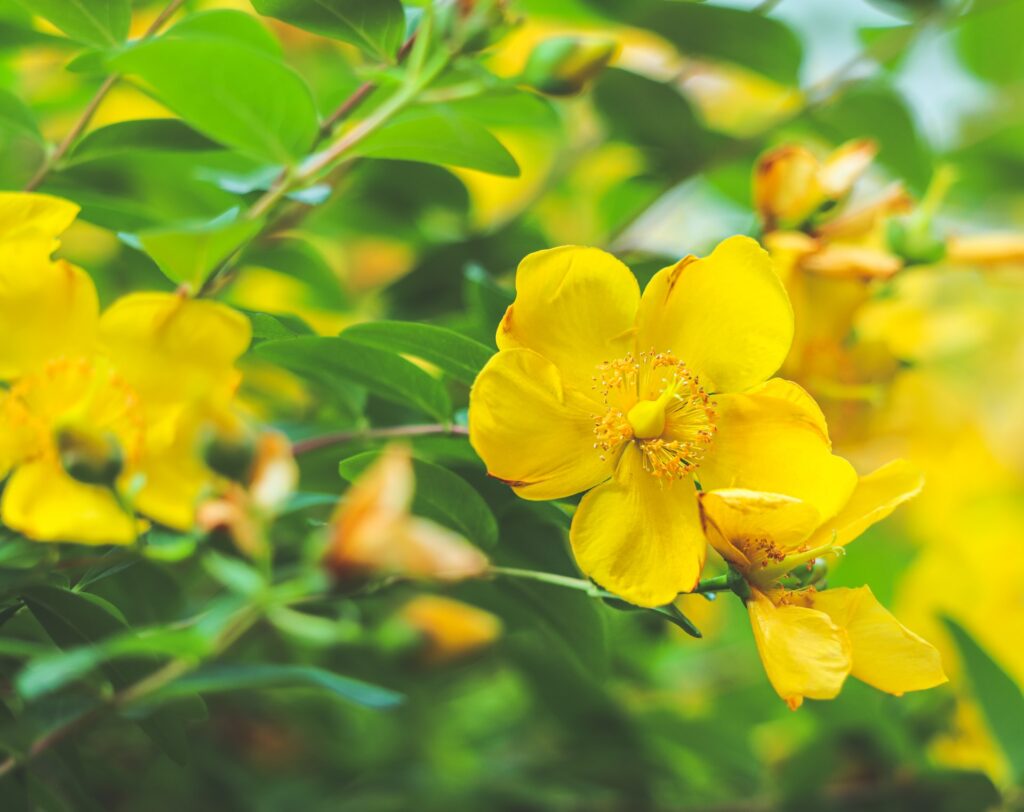Photosensitization is an unusual skin condition that can occur after ingestion of certain plants or, more commonly, in association with liver disease. Primary photosensitisation occurs when horses consume photodynamic plants, such as St. John’s Wort (Hypericum perforatum). It is popular herbal therapy for the control of depression and anxiety in people. The plant is native to Europe, western Asia and north Africa. Although not restricted in Australia it is considered to be a weed and is a declared pest in some locations. It is a common weed in the southwest of Western Australia. Other primary photosensitizing plants in this region are Queen Anne’s lace or Bishop’s weed (Ammi majus), buckwheat (Fagopyrum esculentum), Perennial ryegrass (Lolium perenne) and parsley (Petroselinum crispin). (see the DPIRD and Florabase websites).

In primary photosensitization the photodynamic agent is ingested in a preformed state or occurs as a result of some metabolic process. In St. John’s wort the active component is a red fluorescent pigment, hypericin, found in the leaves. Chemicals that have been associated with photosensitization include antibiotics (tetracyclines, sulphonamides) and chlorthiazides. The photodynamic agent reaches the skin via the circulation.
Contact photosensitization can also occur after exposure to clover pastures, although the mechanism remains unclear.
Secondary (hepatogenous) photosensitization occurs as a result of liver insufficiency. Phylloerythrin is produced in the gastrointestinal tract from bacterial metabolism of chlorophyll and is absorbed, conjugated, and normally excreted by the liver. When phylloerythrin is exposed to ultraviolet light it forms free radicals which lead to cell necrosis. The unpigmented areas of skin absorb UV light best.
The skin becomes reddened (erythematous) and swollen before becoming itchy (pruritic) and painful. There is vesicle formation, which progress to ulcers, skin sloughing and finally scab formation.

The treatment involves removal from offending pasture or chemical in animals with suspected primary photosensitization. The management of secondary photosensitization is more difficult and requires information as to the nature of the liver dysfunction. In both cases restrict access to UV light with daytime stall confinement and night-time grazing, and/or use of skin coverings and high SPF sunscreens. Topical creams containing corticosteroids, pramoxine or other soothing agents may be beneficial. Fly control is also very important.
Tags: Dermatology; Toxicities
